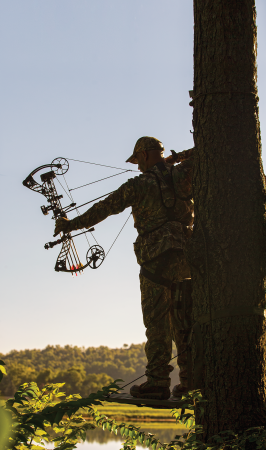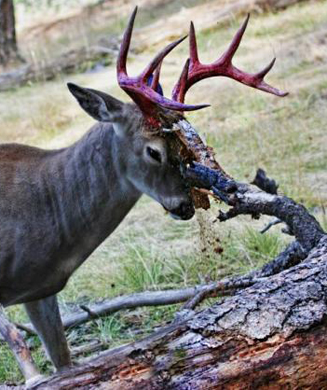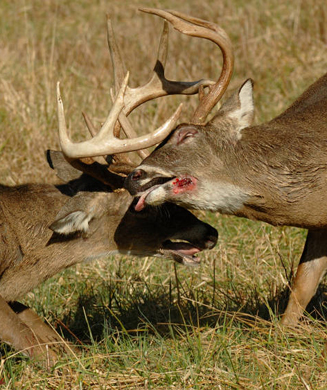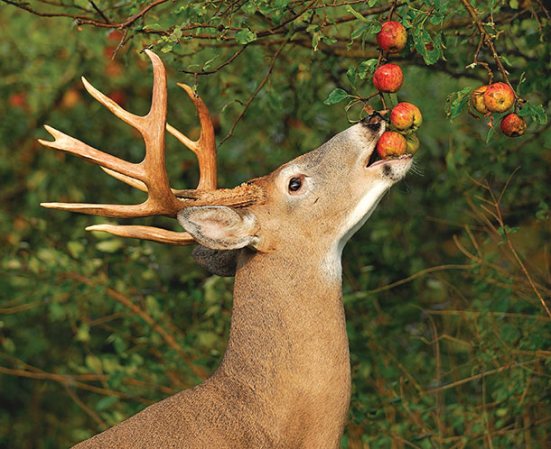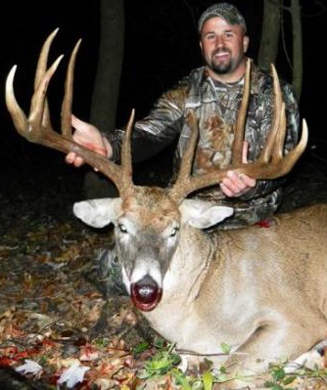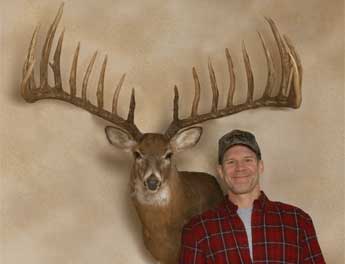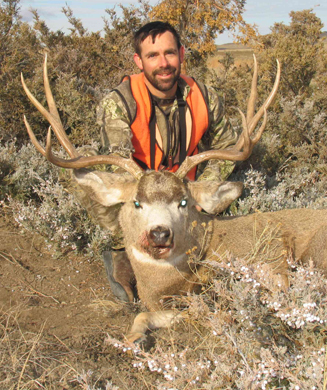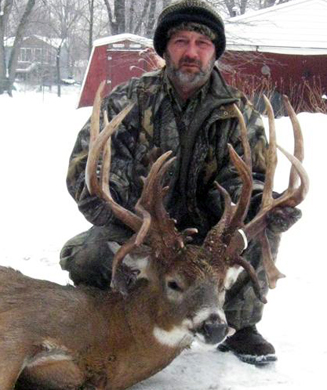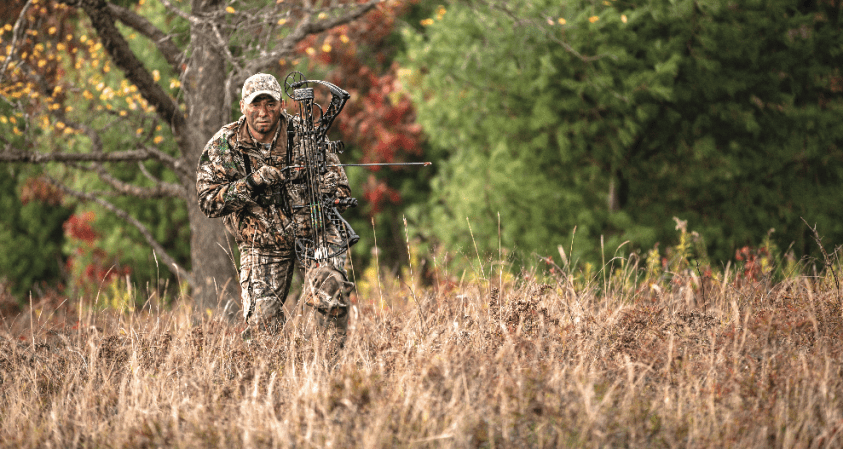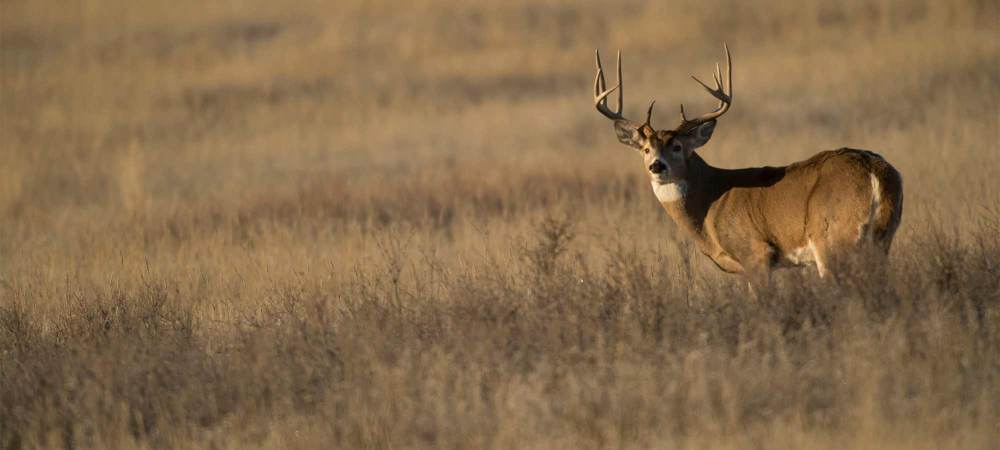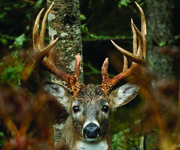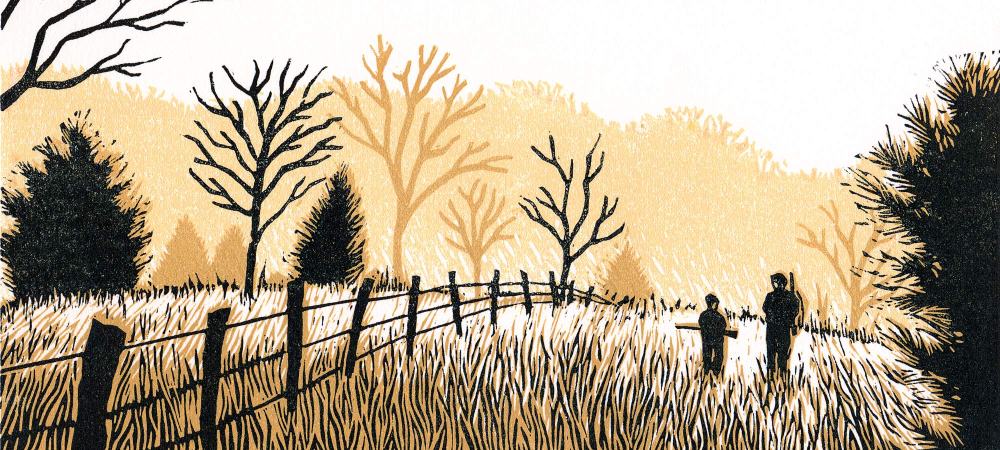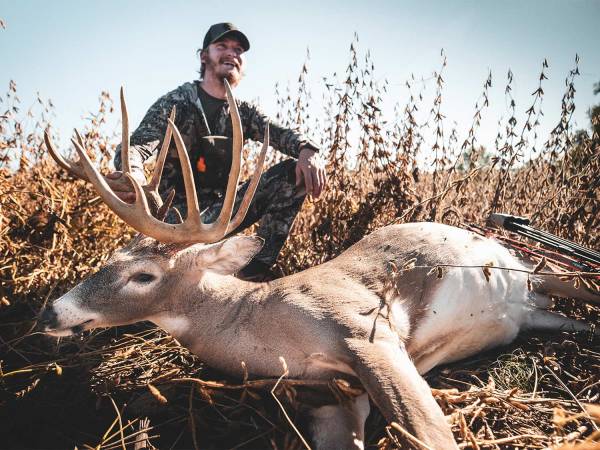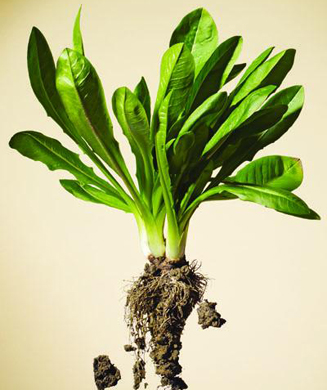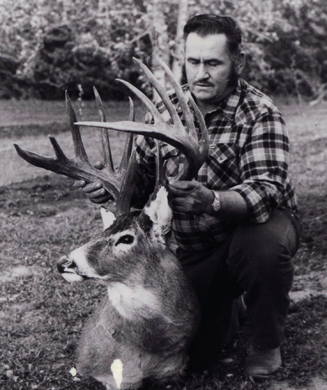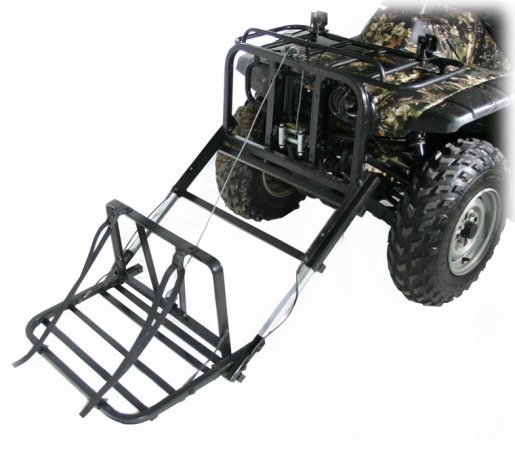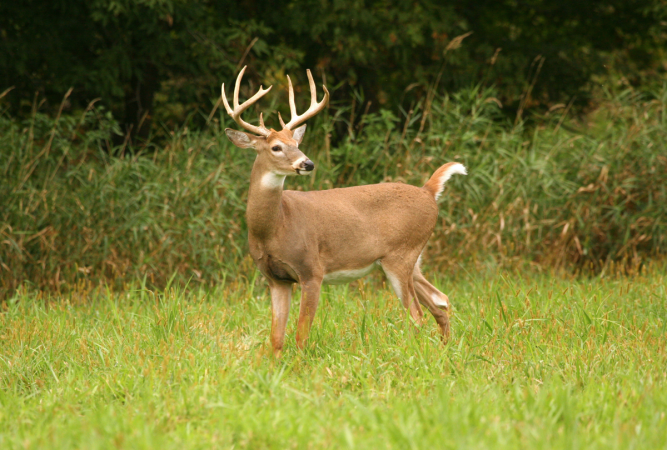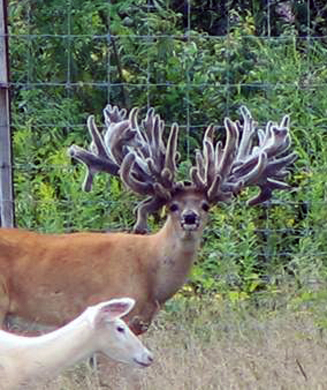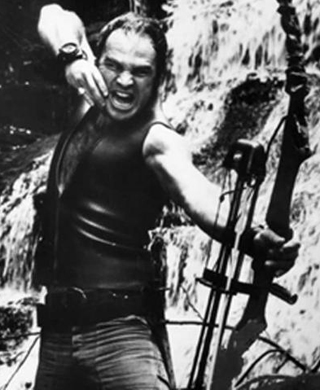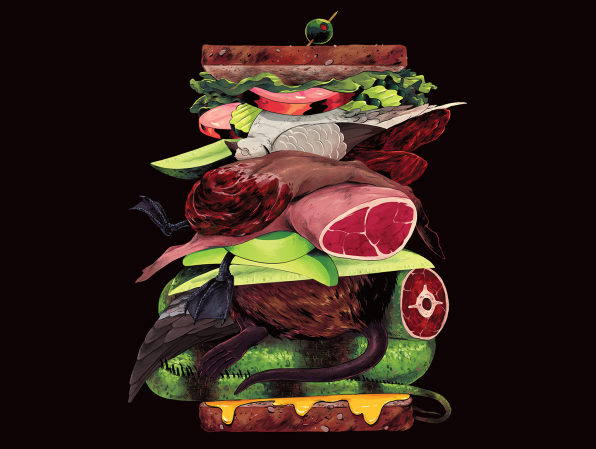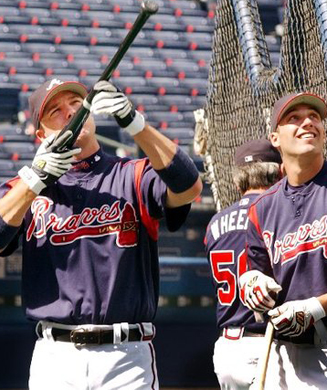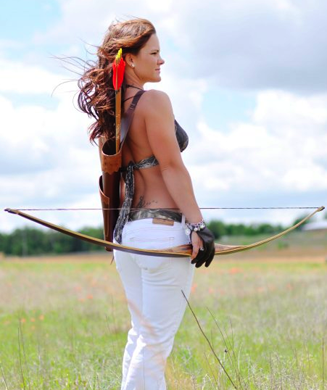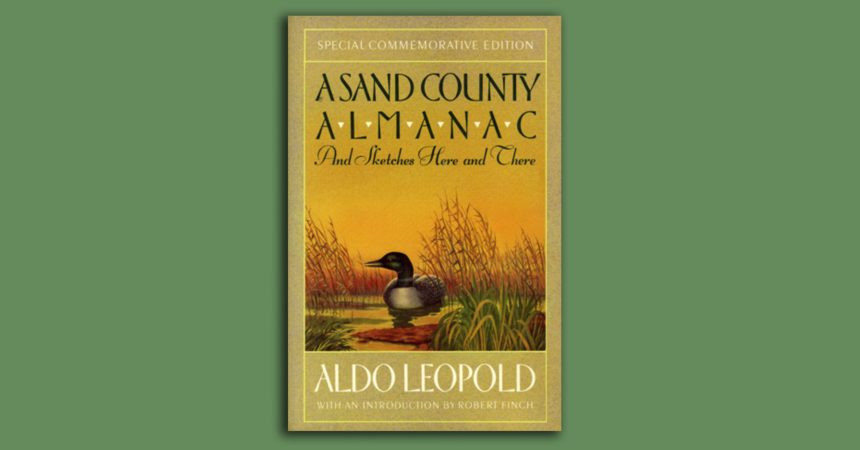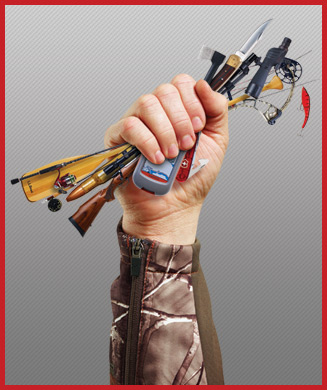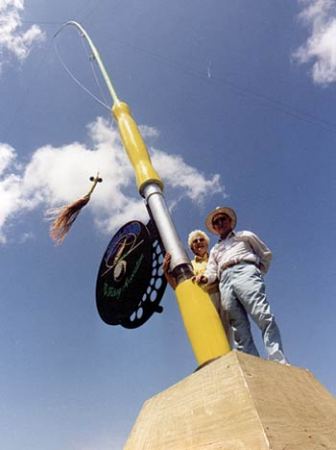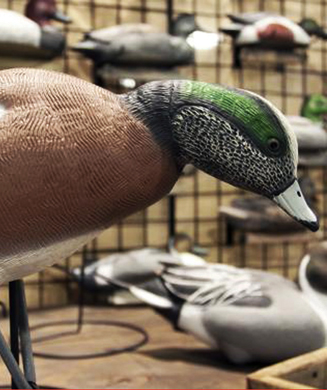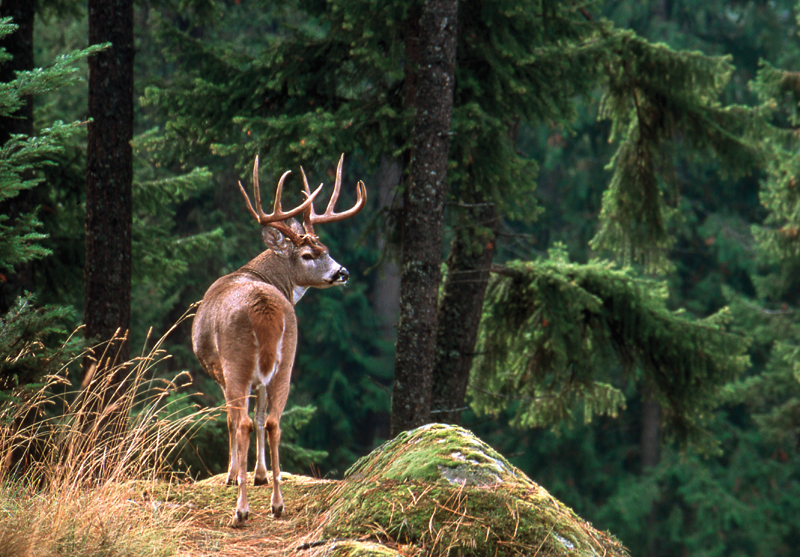
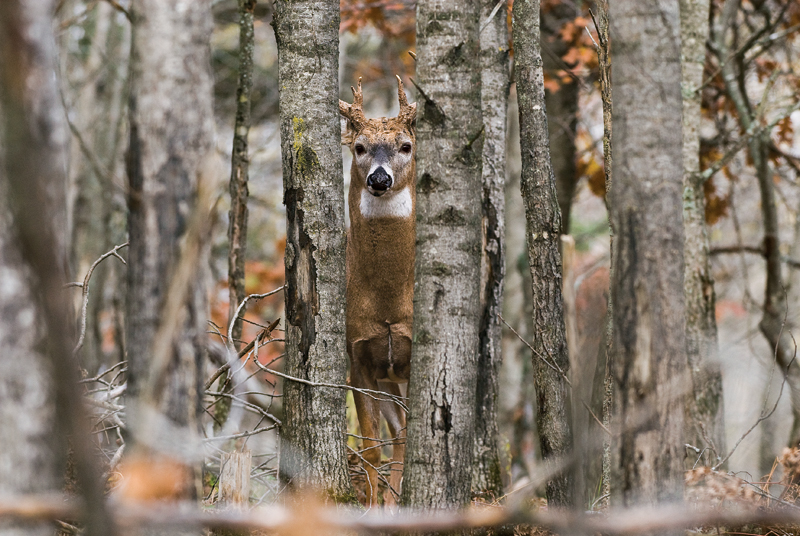
Not even the densest timber can stop word of a big buck from spreading.
"A guy told me that there was a giant 8-pointer that people were seeing in one of my favorite hunting spots in Michigan," says Wisconsin resident Jeff Sturgis, 43. "This was a really big chunk of timber–classic Northern big woods. There was a lot of baiting going on, and they were getting photos at night of that buck at the bait. I was familiar with the location and had a plan." He executed that plan during the first few days of the Michigan rifle season, in mid-November 2011. The result? Sturgis killed the buck nearly 2 miles from where the trail cameras had captured its photos. "In that type of country, it might seem like that was a needle-in-a-haystack type of thing but, really, it wasn't," Sturgis says. "If you know what you're looking for and just think about how deer are likely to use the available terrain features and respond to hunting pressure, you can figure out what they're doing and when they're doing it." From Michigan's Upper Peninsula to the tree-laden State Game Lands of Pennsylvania to the vast rolling hills of hardwoods in southern Ohio, Sturgis, a habitat consultant, has made an art of taking whitetails in mature forests. His plan of attack is simple: addition by subtraction. Find the Focus
"If you look at an aerial photo of some of those public, big-timber areas, it's intimidating. You might be looking at several thousand acres of cover that looks almost the same," he says. "But I break it down pretty quickly. Cross off the areas that contain the same type of cover or habitat and any areas that are within a half to three quarters of a mile to a road or obvious trail. Now, without much effort, you've probably taken a 2,000-acre chunk of land and carved it down to about 200 acres or so. And that's something you can work with." "Lines of Change"
That's exactly the plan Sturgis used to target that oversize 8-point.
"In big timber, everything is on a big scale. In farmland, you're looking for edges and changes in habitat types. It's the same deal with big timber–it's just a little harder to see it," Sturgis says. "And there's a big difference in food sources, too. In big-timber areas, where it's legal, you're likely going to have a lot of guys baiting. Most road or trail endings are going to have a bait pile. But the deer aren't going to use that food source in daylight, especially once the pressure hits. So you have to find those terrain features that the deer are going to use to move between where they bed and those bait piles. And the deer aren't going to go 300 yards between the two. They're probably going to travel a mile." Sturgis looks for areas where two terrain types converge, which he refers to as "lines of change": a cedar swamp meeting an alder thicket, or an alder thicket bumping up against hardwoods. From an aerial image, those transitions may appear subtle, but they are visible. And once you inspect them on foot, you can confirm the habitat changes. Find these transition zones in an area where you can slip in away from roads or obvious trails, and you're in business. "On my 8-pointer, I went nearly a mile back on public land, and it took about an hour. It was black dark when I started and I just used a compass heading to get to my spot," Sturgis says. "I figured if the buck went north, away from the bait and the hunters, he'd probably do it by following those lines of change. I was able to get around the other hunters on the way and did not disturb the deer, and I was waiting when he walked in." Sturgis' priorities never waver, whether it's bow season, opening day of the firearms hunt, or deep into his stint on stand with a muzzleloader. In the big woods, if you want to shoot a big buck, you've got to avoid other hunters at all costs. To him, it's really that simple.
–T.H. Photo by Bill Kinney
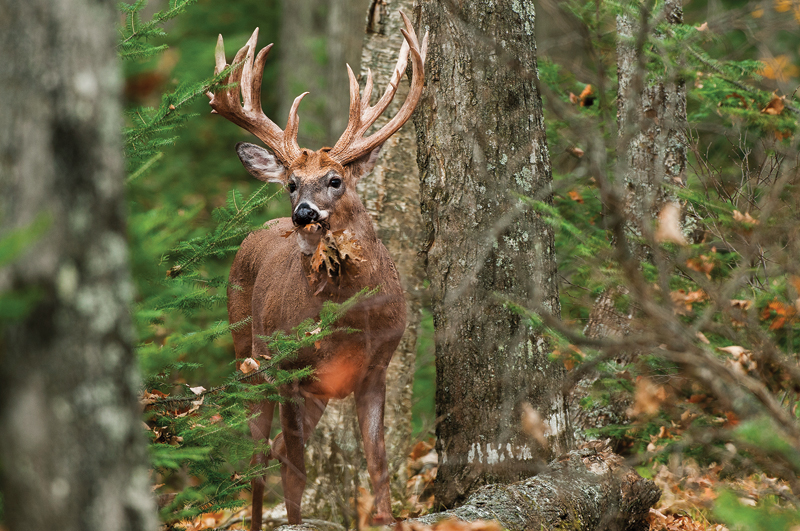
Warner Shedd is 78 years old. He has hunted deer for more than 50 years, and he tells it like it is: "In a good acorn year, if you think you can just wait for a deer to come to you, you're living in a dream world." For 20 years, Warner, his sons, David and Mark, and now his grandson Davey have hunted the same public land in New Hampshire, a state where fewer than one hunter in 10 tags any deer, let alone a buck. Though they rarely hunt more than six days of the two-month season, the Shedds always take at least one deer, and often two or three. Their hunting territory is 6 square miles of thick swamps and steep, rocky hillsides. Access is tough; they rarely see other hunters. "Patterning deer before the season is a waste of time," says Shedd. Deer densities are low and patterns change constantly. The toughest hunting is when the red oaks produce a bumper crop of acorns. Then, whole family groups–from great-great-grandma on down, including attendant bucks–gorge on fat-rich acorns, drink from a trickle of water, and bed down most of the day, all in an area the size of a suburban lawn. Often they won't move for days. Finding the deer is tough–getting a shot is even tougher. The Shedds have a couple of set stands for the first and last hour of each day, but they know from bitter experience that when the acorns are on, they could sit every minute of shooting light for the entire season and never see a deer. So mostly they hunt on their feet, always looking for what Shedd calls "The Least Factor." Less is More
The Least Factor is all about concentrating your hunting efforts on whatever the deer want most that's in the shortest supply. Sometimes it's preferred food. In bad acorn years, the focus is on other food sources. But in a good acorn year, food is everywhere. Sometimes it's water. Sometimes it's does. So what's The Least Factor amid acorn abundance? When nuts are everywhere, the Shedds try to find where deer are eating what the family calls "dessert." Deer like a change in diet once in a while, and they will sometimes leave acorns to forage for beechnuts, wild cherries, apples, a patch of wild clover in a sunny opening, or mushrooms. Security cover can also play into the game plan. By covering ground, the Shedds can sometimes move deer toward the most secure spots in the territory–the thickest swamps, the steepest ridges, any place that's hard for humans to encroach upon. "Sometimes we see deer before they detect us. More often, one of us will push the deer toward one another," says Shedd. "It doesn't work every time, but year in and year out, using The Least Factor to focus our efforts has put venison on the table."
–T.J. Photo by Bill Kinney
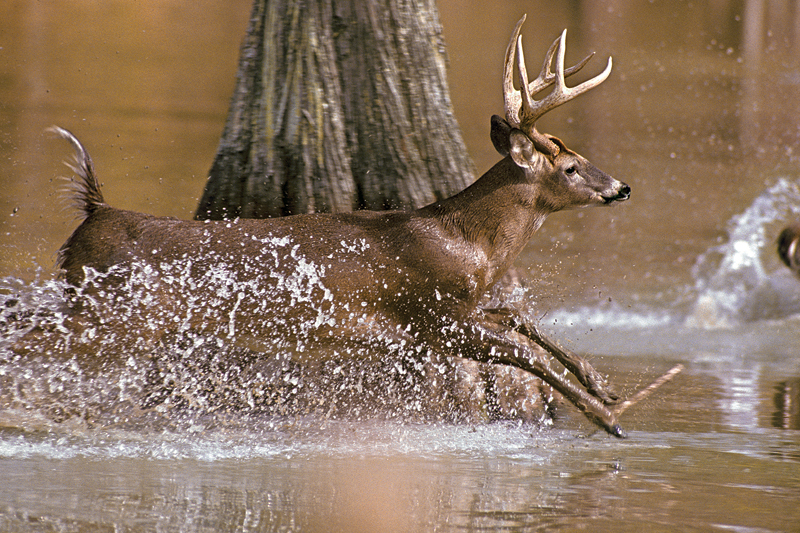
Mosquitoes, snakes, waist-deep water, mud bogs, and deer–big deer–are what you will find if you have the wherewithal to slosh through a swamp on opening day of the season. Lee Sisson knows this all too well. The 65-year-old retired fishing-lure designer has been stalking whitetails in marshes his whole life, from Louisiana to Florida, where he now resides. "There is nothing easy about hunting a swamp," says Sisson. "The deer have a lot of places to go, they can hear you coming from a long way off, and the conditions are pretty miserable. You will get wet, muddy, and bitten by something. You'll sweat until you run out of it, and every muscle in your body will ache by the time you get back to the truck. But if you really want to kill a big deer when there is a lot of hunting pressure in the woods, it's worth the effort." Easy Does It
Sisson knows this firsthand. In 1994, he tagged just the third Pope and Young record-book buck ever to come from the state of Florida by setting up in the middle of a swamp. In fact, almost all of Sisson's big bucks have come from either swamps or the edges of these wetlands. "I had seen the buck on the edge of the swamp for several years but could never set up for him on the edge. He'd always see me coming. So I finally decided I'd have to go in after him," Sisson says. However, a hunter can't just barrel into the marsh with a rifle slung over his shoulder and expect success. "First, identify the food source deer prefer on the edges of the swamp. They will almost always come out of the marsh to feed at night. Once you find the food source, scout for the staging areas," says Sisson. He defines a staging area as a very thick, brushy, or high-grass area adjacent to the swamp, where big bucks will feel secure before moving into more open terrain. "These staging areas will have a ton of sign. There will typically be a lot of rubs in a really small area. And the grass or brush may be so high that all you'll be able to see are the tips of the deer's antlers when he walks through it." Lastly, identify the islands or high spots adjacent to these staging areas, where the bucks likely bed, and choose a stand location that you can get to that puts you between the bedding and staging areas without creating too much of a disturbance. "Look on Google Earth to find the islands these deer are probably using, and get as close as you can. I killed the P&Y buck by coming in from the opposite side of his food source, where he would not expect a hunter–or any danger, for that matter–to appear." "I was dripping with mud and sweat, and every muscle in my body ached. But I got the perfect shot the first day on stand."
–J.H. Photo by Len Rue Jr.
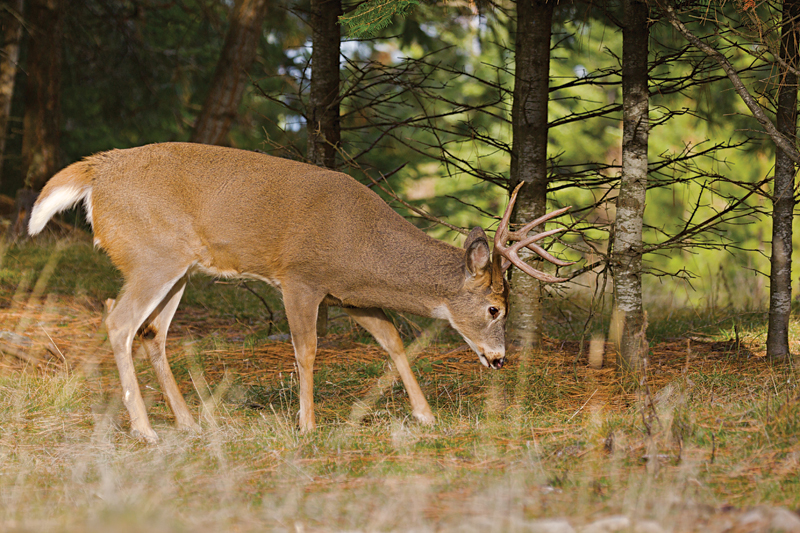
There may not be a more frustrating scenario for a deer hunter than trying to shoot a big buck in orderly rows of planted evergreens. When the trees are young, they are seemingly too thick to hunt. When they are old, they create a canopy so dense that undergrowth is completely absent, eliminating food sources for deer. That said, huge bucks are killed in vast pine plantations every year. Shane Johnson, a 44-year-old contractor, is one of the few guys who has figured out how to kill pine-thicket bucks from opening day until the last minute of the daylight on the final day of the season. "I have hunted public land all my life because that's all I have. And as with most public land, the areas I hunt are almost all pines. So, I was forced to figure out a system that would consistently work in this situation," Johnson says. He has arrowed 121 deer from public-land pine thickets since the mid-'80s, with at least one trophy buck per year since he began using archery equipment. And he never uses bait. "My system is fairly simple, but it takes a lot of scouting. First and foremost, you have to find trails. But a single deer trail isn't enough," Johnson explains. Once he identifies a trail deer are using before the season begins, he pushes farther into the pine thickets to look for alternative trails. Calling the Rut
"When I've located several trails in an area, I'll follow these trails until they intersect. These intersections are the sweet spots," he says. After he has located the intersections, Johnson will then find the food source deer are using. "Food and sex are really all a guy needs to consider when trying to pattern a deer. So when I figure out what the deer are eating, I create a plan of entry to the intersection where I know the deer will not cross my path on the trail to the food." Once the rut begins, Johnson continues to hunt intersections, but he becomes very aggressive with his deer calling. "Just about every big buck I have killed in pine thickets has come in to a call during the rut. They expect does to use familiar trails, and they realize that their best chance of finding a girlfriend is going to be at these intersections–they're like a nightclub for does. When a buck hears the music of a bleat, he stiff-legs it on over!" Johnson believes one of the most important aspects of hunting pine thickets that many hunters overlook is creating a plan of entry to the stand. "If you inadvertently cross a trail that a big buck is using and he realizes you are in the area, you will not see him. He will leave and may not return for several days." Johnson has sacrificed several days of hunting to observe how deer are using crossings simply to figure out his approach. "I found a killer trail intersection going from a 3-year-old clear-cut with seed pines, which led to an old stand of pines. So I glassed that area for two days and watched 15 different deer filter through. This gave me the information I needed not only to set up my stand in the perfect spot, but also how to walk in there without leaving my scent on the trails the deer were using to get there." His glassing paid off. On his first sit on that pine-thicket stand, he arrowed a 127-inch 8-pointer. "The next most important aspect of hunting these thickets is to make sure you are hunting fresh sign," Johnson says. "Ninety percent of my time in the woods is spent scouting for fresh sign–the other 10 percent is on stand. A piney woods deer will move a lot looking for food. If you are hunting old sign, you are likely hunting behind that buck."
–J.H. Photo by Lon E. Lauber
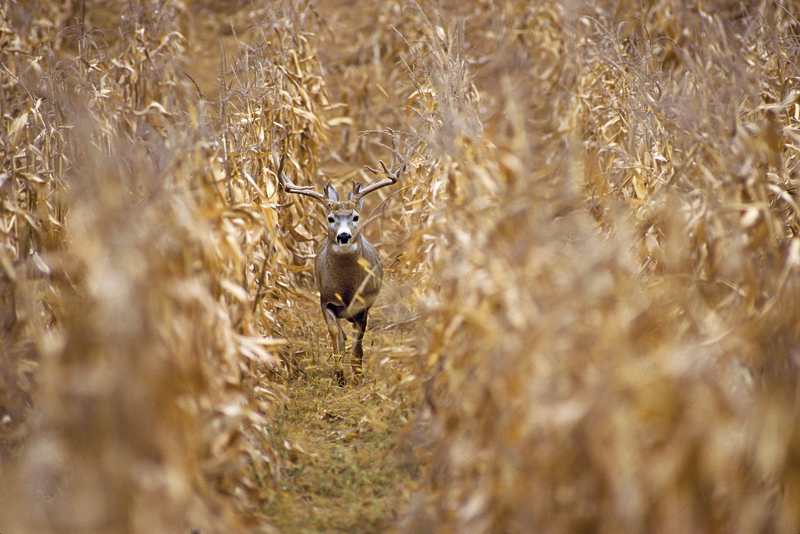
Karl Keller is one of the few hunters who can consistently kill mature bucks in the Thumb region of Michigan. For those unfamiliar with it, this is an area of the state that is pancake-flat and features vast fields of corn and soybeans, broken up only by homes, villages, and the occasional sparse woodlot. It's also home to some of the most intense hunting pressure in a state known for it. And you'll never guess where he's killed those deer. "I'm hunting those bucks in places that look like nothing," he says. "But I know that if a buck's got a good place where he feels like people can't see him, that's where he's going to live." One such place is a field of standing corn.
**
Fear the Reaper**
To a lot of farmland hunters, the notion of hunting standing crops–particularly corn–during the peak of the rut or, perhaps even worse, on opening day of gun season is not something they relish. Keller, on the other hand, is almost giddy at the prospect. "That's a pretty good situation to be in. When you've got standing corn, you're probably going to see a lot more young bucks make it through to the next season. In areas with a lot of hunting pressure, that's a benefit," Keller says. "It also means that those little hidden areas are going to hunt even better." In farmland, it's common for county roads to dissect the countryside into neat one-mile squares. Find a spot in one of those squares that has just enough cover and terrain variation to hide a whitetail, and you're onto something. If that hidey-hole is bordered by a standing crop or, better yet, a variety of crops, you've found a killer location. "That's exactly the type of spot I took a buddy to. I sat him in a treestand along a little creek bottom that had a little 'L' in it. That was the end of the creek ditch," Keller says. "It has fields that go out from three sides. He shot the fifth 8-point that walked by. Two days later, we went back into that same spot and he shot an 18-inch-wide 8-pointer out of that same stand. Where you have a soybean field and a cornfield converging, and there's a tree nearby, you're going to kill deer. "A standing crop makes those places even better–you don't need to be in the forest to shoot a big buck. That's not where those big deer are at."
–T.H. Photo by Bill Kinney
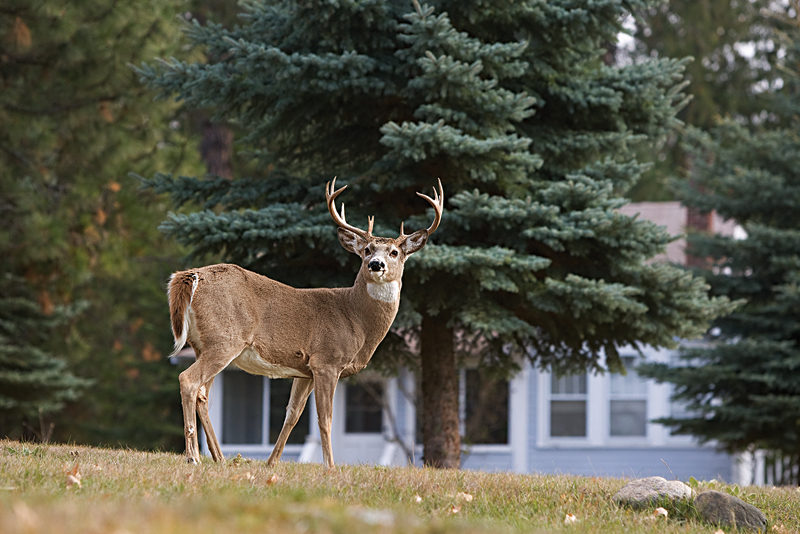
Arnie Jonathan hunted opening day of the 1998 deer season on the back of his friend's small New York farm without seeing a deer. There were only about 15 acres of woods and a lot of houses in the area, and he thought hunting such a populated spot might be futile. "After about the third day of the season, I was a little frustrated. Then my friend's wife said, 'Why don't you hunt behind the house? I see a huge buck by the horse fence every day.'"
So he did, and he killed the 125-plus-inch deer within spitting distance of the home. "That's when it hit me. I had been walking past all the deer to get to the most remote spot I could find in suburban areas. Fact is, the deer will hang out in a backyard if he feels safe. So I started hunting backyards."
**
Small Tracts, Big Racks**
This has paid off for the 50-year-old retired corrections sergeant for more than 15 years now, as he has taken four bucks over 150 inches in suburban settings, the biggest of which grossed 169. His success is based on two very simple but important concepts. "First, a hunter has to realize that even though you are very close to a lot of humans, scent control is extremely important. If you blow a buck out of a suburban area, you might not see him again for weeks." Much of Jonathan's hunting happens near Buffalo, N.Y., behind subdivisions where thick, brushy cover separates backyards from small tracts of farmland. "These thickets are the primary travel routes for suburban deer, and if you aren't absolutely clean and scent-free, then you will never get a shot." Jonathan uses doe urine and tarsal glands from bucks he has harvested to not only cover his scent, but also to attract deer to his stand location. And attracting deer is incredibly important when you sometimes have only one climbable tree in the scrubby fingers of the brush you hunt. But attractant scent isn't the only aspect of his hunting system that has improved his success. Calling is the second part of the equation. "All of the big bucks I have killed have come to calls. It's almost like these deer are even more territorial when they have less property to protect." The 169-inch bruiser he shot two years ago came in to a Quaker Boy Big Bully rattling bag, and was shot within 500 feet of a backyard. "Two of my other 150-plus bucks came in to a grunt. My point is, don't be afraid to be vocal in a suburban setting. "Hunting the suburbs is a different ballgame, but it's very winnable if you alter your methods."
–J.H. Photo by Donald M. Jones
These 6 bucks give hunters nightmares every year. We put together a game plan for you to tag out on the smartest, wariest, and most remote whitetails.


